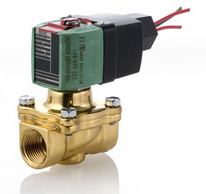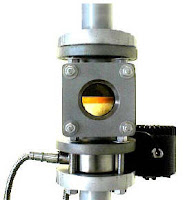The customer is global supplier of vibration damping and sealing products for the automotive, consumer electronic and industrial markets that sells elastomer-coated metals, gaskets, brake shims and automotive and brake noise insulators. They also manufacture a variety of sealing materials, such as deck plates, oil filter adaptors, water outlets, pumps, relief valves, and rear cam and surge tank covers.
In their process solvents are applied to a web material. The web material contains PTFE and/ or rubber based adhesives and at times silicone. The main solvent component used is MEK which is not a high flash point solvent.
Flammability analyzers were being used to monitor the flammability levels of the varying solvent levels in the zone’s atmosphere.
The flammability analyzers were mounted fairly far from the oven because of operating temperatures, and subsequently had long sampling lines. The last three zones were very challenging due to the distance and the use PTFE, silicones and other resins. Because the lines were so long, they were clogging from VOCs and vaporized web material and required the line to be shut down and cleaned. The downtime meant loss of production and loss of profits. The customer tried adding end-of-line filters on all sample tubing, which helped, but didn't solve the problem.
To solve the problem, the customer upgraded to a new flammability analyzer (a
CIC model SNR674) rated for operating temperatures high enough (392 F) to keep all the elements in a vapor state and designed for use in a dirty environment. Theses new flammability analyzers are mounted directly on the oven wall eliminating the long sample lines. By keeping the sample lines as short as possible they were able to minimize the VOC condensation and eliminate the clogging.
For more information, contact:
Ives Equipment
(877) 768-1600
www.ivesequipment.com





